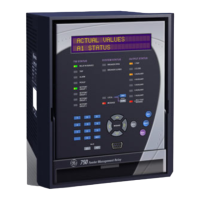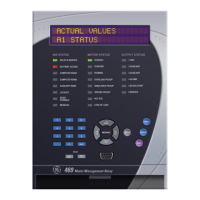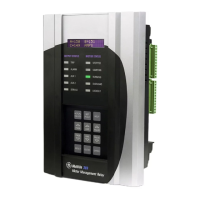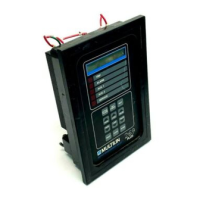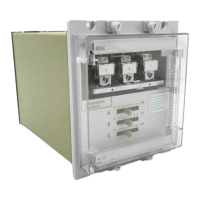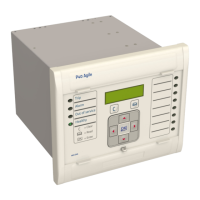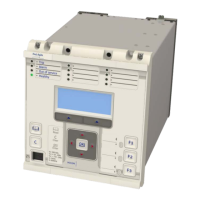S4 Elements745
Transformer Management Relay
Setpoints
http://www.GEindustrial.com/multilin
5–40
GE Multilin
Following the setpoint descriptions are logic diagrams illustrating how each setpoint,
input parameter, and internal logic is used in a feature to obtain an output. The logic
diagrams are organized into the following functional blocks:
SETPOINTS
• Shown as a block with the heading 'SETPOINT'.
• The exact wording of the displayed setpoint message identifies the setpoint.
• Major functional setpoint selections are listed below the name and are
incorporated in the logic.
MEASUREMENT UNITS
• Shown as a block with inset labelled 'RUN'.
• The associated pickup or dropout setpoint is shown directly above.
• Operation of the detector is controlled by logic entering the 'RUN' inset.
• Relationship between setpoint and input parameter is indicated by simple
mathematical symbols: '<', '>', etc.
TIME DELAYS
• Shown as a block with the following schematic symbol: .
• The delay before pickup is indicated by t
PKP
, and the delay after dropout is
indicated by t
DO
.
• If the delay before pickup is adjustable, the associated delay setpoint is shown
directly above, and the schematic symbol indicates that t
PKP
= DELAY.
LED INDICATORS
• Shown as the following schematic symbol: ⊗.
• The exact wording of the front panel label identifies the indicator.
LOGIC
• Described using basic AND gates and OR gates
<NAME OF ELEMENT>
TARGET: Latched
Range: Self-reset, Latched, None
Target messages indicate which elements have picked up
or operated. Select “Latched” to keep the element target
message in the queue of target messages, even after the
condition which caused the element to operate has been
cleared, until a reset command is issued. Select “Self-
reset” to automatically remove the target message from
the message queue after the condition has been cleared.
Select “None” to inhibit the display of the target message
when the element operates. An element whose target
type is “None” will never disable the LED self-test feature
because can not generate a displayable target message.
<NAME OF ELEMENT>
BLOCK: Disabled
Range: Disabled, Logc Inpt 1 to 16, Virt Inpt 1 to 16,
Output Rly 1 to 8, SelfTest Rly,
Virt Outpt 1 to 5
Select any logic input, virtual input, output relay, or
virtual output which, when asserted or operated, blocks
the element from operating. Selecting a logic or virtual
input allows blocking the element based on a decision
external to the 745. Selecting an output relay or virtual
output allows blocking the element based on conditions
detected by the 745 and the combination of logic
programmed in the associated FlexLogic™ equation.
t
PKP
=DELAY
t
DO
=0
